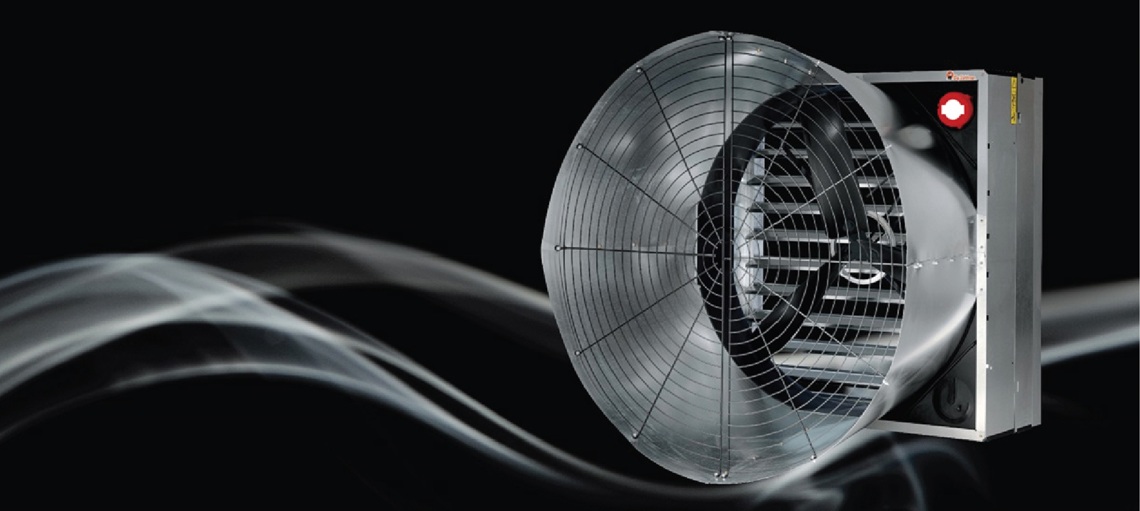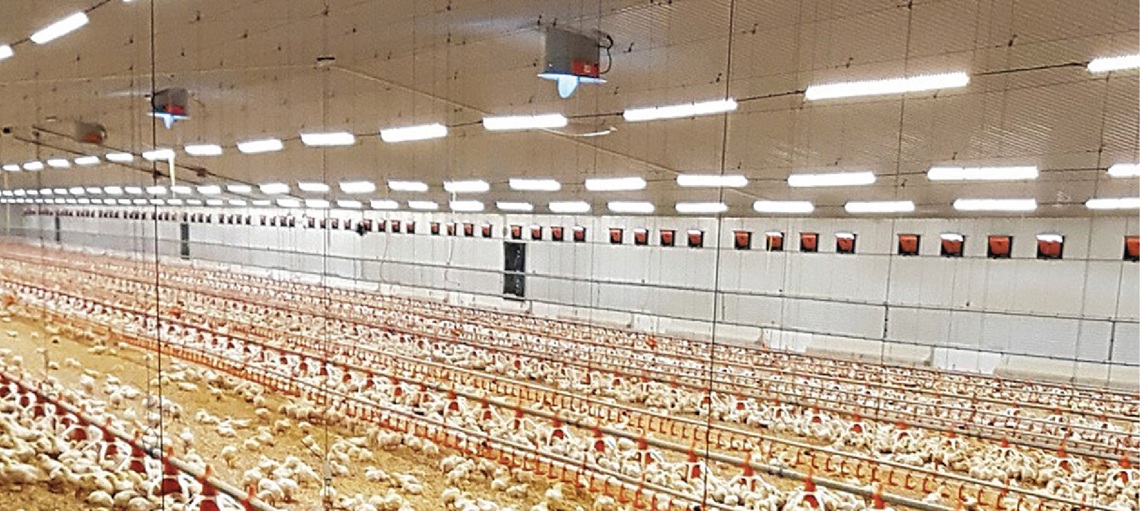Modernizing Legacy Farms: A Practical Retrofit Guide
Most poultry farms across Asia operate legacy houses with curtain walls, minimal insulation, and fixed-speed fans. While these farms produce results, they struggle with high electricity costs and inconsistent climate control. Retrofitting with modern technologies can reduce energy consumption by 25-60%, improve bird performance, and deliver payback within 2-5 years. This guide provides a practical framework for making these upgrades work financially and operationally.
Why Retrofit Instead of Rebuild?
The economics are straightforward. Building a new poultry house from scratch requires significant capital investment, lengthy regulatory approvals, and extended downtime. For many farms, this simply isn't feasible.
Retrofitting offers a middle path. You can upgrade systems incrementally, maintain production during most improvements, and invest based on what delivers the fastest returns. The key is knowing which upgrades matter most.
Legacy houses typically suffer from three main issues. First, poor insulation allows heat to flow in during hot weather and escape during cold periods. Second, fixed-speed fans run at full capacity or not at all, wasting energy during moderate conditions. Third, outdated lighting adds unnecessary heat load while consuming significant power.
Understanding the Three Retrofit Tiers
Tier 1: Basic Improvements (Lower Investment)
Start with maintenance and minor upgrades. Clean fan blades and motors, repair broken shutters, seal obvious air leaks around doors and windows, and upgrade basic thermostats. These simple fixes typically cost less but deliver 5-10% efficiency gains. Think of this as optimizing what you already have.
Tier 2: Targeted System Upgrades (Moderate Investment)
This level focuses on specific high-impact changes. Add insulation to walls and ceilings, replace fixed-speed fans with variable-speed alternatives, upgrade to LED lighting, and install improved building seals. Research shows these upgrades can reduce energy consumption by 25-40% depending on your starting point. Most farms see payback within 3-5 years.
Tier 3: Comprehensive Climate Control (Higher Investment)
Complete environmental system overhaul including insulation, variable-speed ventilation, LED lighting, and integrated digital controls that coordinate all systems. This approach can achieve 40-60% energy reduction with improved bird performance metrics. While the upfront investment is higher, the combined benefits often justify the cost for farms planning long-term operations.
Four Key Retrofit Strategies: Impact and Returns
1. Insulation: Your Foundation for Control
Energy Impact: 15-30% reduction in heating and cooling loads
Payback Period: 3-6 years

A well-insulated, closed house system reduces your baseline energy needs by slowing heat transfer through walls and roofs. In tropical climates, this means less heat entering during the day. In temperate regions, it means retaining warmth during cooler periods.
Upgrading from minimal insulation (R-2 to R-3) to good insulation (R-7 to R-10) can reduce heat transfer by up to 75%. The impact on your cooling and heating loads is immediate and measurable.
The retrofit process varies by building type. For curtain-sided houses, replacing sections with insulated solid panels provides the biggest improvement. For houses with existing walls, adding rigid foam boards or spray foam to cavities works well. Roof upgrades often deliver the best return since heat rises and roof surface area is substantial.
Buildings in regions with high seasonal temperature swings see faster payback. Start with the areas getting the most sun exposure. South and west walls in the northern hemisphere, north and west walls in the southern hemisphere. These sections experience the highest heat gain and benefit most from upgraded insulation.
2. Variable-Speed Fans: Matching Airflow to Need
Energy Impact: 40-60% reduction in fan energy consumption
Payback Period: 2-5 years
Traditional fixed-speed fans operate at full capacity whenever they run. This creates a binary system where you're either ventilating too much or not enough during moderate conditions.

Variable-speed fans use variable frequency drives (VFDs) to adjust motor speed based on actual needs. When fans run at half speed, they move half the airflow but use only about 15% of the energy required at full speed. This cubic relationship between speed and energy consumption is where the savings come from.
Studies comparing VFD control systems to traditional ON-OFF systems show energy consumption drops to approximately 64-75% of previous levels. The savings compound during shoulder seasons when you need ventilation but not at maximum capacity.
Given that fans typically represent 60-70% of total electricity use in poultry houses, this translates to substantial operational savings. Beyond energy reduction, variable-speed fans create more stable environments. Instead of temperature swings from fans cycling on and off, airspeed gradually increases or decreases. This reduces bird stress and improves uniformity across the house.
When selecting variable-speed fans for retrofit, prioritize efficiency ratings (cubic feet per minute per watt) and ensure your electrical system can support VFD controllers. Most modern VFD systems integrate easily with existing controls, though you may need to upgrade your control panels.
3. LED Lighting: Quick Wins with Low Risk
Energy Impact: Approximately 50% reduction in lighting energy
Payback Period: 1-3 years
Lighting retrofits are often the easiest upgrade to justify. The technology is mature, installation is straightforward, and results are predictable.

Modern ventilation and lighting improvements can reduce energy use by 30-40%, with LED lighting contributing a significant portion of these savings. LEDs use approximately half the energy of traditional fixtures while producing less heat. This double benefit is especially valuable in climate-controlled environments.
While lighting represents a smaller portion of the total energy budget compared to ventilation, the lower upfront cost and fast payback make this one of the lowest-risk improvements you can make. Beyond energy reduction, LED systems offer dimming capabilities that align with bird activity patterns. You can program lighting schedules that support natural behaviour while minimizing unnecessary illumination.
Start with the main production areas, then expand to service areas and exterior lighting as budget allows. The quick returns from LED retrofits can help fund your next phase of upgrades.
4. Integrated Controls: Making Systems Work Together
Energy Impact: 10-20% incremental improvement through optimization
Payback Period: Best evaluated as part of total retrofit package

Individual upgrades deliver results, but integrated control systems multiply those benefits. When ventilation, heating, cooling, and lighting operate as a coordinated system rather than independent components, you eliminate inefficiencies and conflicts.
Modern control platforms monitor temperature, humidity, air quality, and bird age, then adjust all systems in response. For example, when humidity rises, the system increases ventilation slightly while adjusting heating to maintain target temperature. This coordinated response is more efficient than systems operating on separate triggers.
The control system also provides data visibility. You can track energy consumption by system, identify anomalies quickly, and validate that retrofits are delivering expected savings. This feedback loop helps refine operations over time.
For retrofit applications, look for control systems designed to integrate with mixed equipment ages. You'll likely have some new variable-speed fans alongside older fixed-speed units during the transition. The control system needs to manage both effectively.
Real-World Results and Expectations
The most valuable data comes from actual farm retrofits rather than laboratory conditions.
A University of Arkansas study tracking commercial broiler houses over four years found that retrofitting from curtain-sided to enclosed, controlled environments improved feed conversion ratios, bird liveability, and growth rates beyond what genetic and nutritional improvements alone could explain.
In Georgia, a broiler-breeder farm replaced fixed-speed tunnel fans with variable-speed alternatives, reducing tunnel fan operating costs by more than 50% annually. The farm-maintained production throughout the installation by upgrading one house at a time.
Research across multiple livestock building retrofits shows consistent patterns. Energy consumption decreases significantly, environmental stability improves, and operational flexibility increases. The exact percentages vary by starting conditions, but the direction is always positive.
Making the Decision
Retrofitting isn't about achieving perfection. It's about making legacy assets perform better than they were designed to. Every percentage point of energy reduction improves your margin. Every improvement in environmental stability benefits bird performance.
The farms that retrofit successfully treat it as an ongoing process rather than a one-time project. They measure results, learn from each phase, and continuously optimize. This approach turns legacy houses into competitive operations without the capital outlay of complete reconstruction.
For many operations across Asia, retrofit isn't optional anymore. Rising energy costs, increasing performance expectations, and tightening margins make efficiency improvements necessary for long-term viability. The good news is that proven technologies exist to deliver these improvements with predictable returns.
The question isn't whether to retrofit, but how to sequence your improvements for maximum impact at minimum risk.
Frequently Asked Questions
How do I avoid production disruption during retrofit?
Most improvements can happen between flocks when houses are empty for cleaning. For larger projects, upgrade one house at a time so production continues in others. Critical systems like fans should have temporary backup during installation.
Will my old building structure support these upgrades?
Most can. Insulation panels mount to existing walls or fit within wall cavities. Variable-speed fans typically mount in the same locations as old fans. LED fixtures retrofit into existing sockets. Have a structural engineer assess if you're concerned about load-bearing capacity.
Do variable-speed fans need special maintenance?
VFD controllers require occasional calibration and the electronics should stay clean and dry. However, because the fans run at lower speeds most of the time, mechanical wear is actually reduced compared to fixed-speed fans constantly running at maximum.
What if electricity costs are already low?
Retrofit still makes sense for three reasons. First, lower baseline consumption protects you when rates increase. Second, improved climate control often improves bird performance beyond the energy savings. Third, environmental regulations are tightening globally, and efficient operations position you well for future requirements.
References
- Alabama Cooperative Extension System. (2024). "Variable Speed Exhaust Fans for Poultry Houses: Pros and Cons." https://www.aces.edu/blog/topics/farming/variable-speed-exhaust-fans-for-poultry-houses-pros-and-cons/
- Farm Energy Extension. "Livestock Buildings Energy Efficiency Checklist and Tips."
https://farm-energy.extension.org/livestock-buildings-energy-efficiency-checklist-and-tips/ - Oklahoma State University Extension. (2017). "Poultry Ventilation Fan Maintenance and Energy Savings."
https://extension.okstate.edu/fact-sheets/poultry-ventilation-fan-maintenance-and-energy-savings.html - The Poultry Site. "Ventilation Boosts Poultry Productivity."
https://www.thepoultrysite.com/articles/ventilation-boosts-poultry-productivity - University of Georgia. (2022). "Variable-Speed Tunnel Fans: Broiler House Upgrade."
https://www.poultryventilation.com/resources/variable-speed-tunnel-fans-broiler-house-upgrade/ - Vadiee, A., & Martin, V. (2007). "Energy Saving in Agricultural Buildings Through Fan Motor Control by Variable Frequency Drives." Energy and Buildings.
https://www.sciencedirect.com/science/article/abs/pii/S0378778807002058 - Zootecnica International. (2021). "Variable Speed Tunnel Fans."
https://zootecnicainternational.com/featured/variable-speed-tunnel-fans/
Disclaimer:
This article is based on publicly available research and industry publications and is intended as a general guide for poultry producers. While every effort has been made to ensure accuracy, the information provided should not replace professional veterinary advice or site-specific consultations. Production outcomes may vary based on local conditions, management practices, bird genetics, and other factors.




